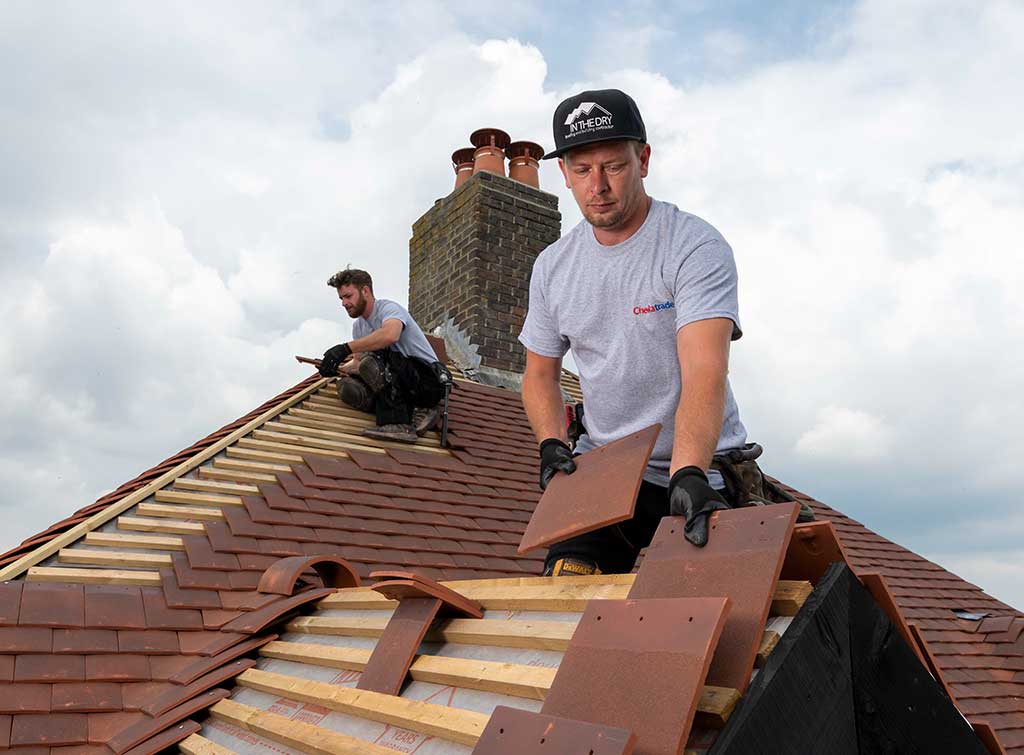Understanding Roof Replacement in the UK: What Homeowners Have to Know
Understanding Roof Replacement in the UK: What Homeowners Have to Know
Blog Article
Any homeowner in the UK will find that roof replacement is an important undertaking. With the country's ever-changing weather conditions, ensuring that your roof is in good condition is not only a matter of aesthetics but also of safety and functionality. Over time, roofs naturally wear down due to exposure to wind, rain, snow, and even heat. A full roof replacement is the only solution when repairs no longer work. It is important to approach this process with careful planning and an understanding of what it involves. Roof replacement is a complex process that requires strategic planning and knowledge. By taking proactive measures now, you can avoid more costly and larger issues in the future.
Understanding when you need a new roof is the first step. Water stains, mould, broken tiles or sliding tiles are all common signs. Granules of shingles can also accumulate in gutters. Roofs older than 20-30 years are usually nearing their end-of-life, particularly if they have not been maintained regularly. While a professional roofer is best equipped to assess the condition of a roof, homeowners can also conduct a visual inspection from the ground to identify glaring problems. If unsure, booking a roof survey from a trusted local contractor can provide clarity and a detailed cost estimate. Early intervention can often prevent more expensive work such as structural strengthening or timber repair. A timely roof replacement can therefore save both money and stress in the long run.
It is important to know when the roof needs replacing. This will help you avoid unnecessary costs and further damages. Minor repairs may prolong the lifespan of the roof. However, there are signs that indicate it's time to completely replace the roof. Frequent leaks are a sign to look out for, particularly if the water is starting to enter the house. Even small leaks can lead to extensive water damage, including mold, mildew, and compromised insulation. Other signs include missing or cracked tiles, sagging roof sections, or increased energy bills due to poor insulation. It is time to replace the entire roof if it has been over 20 years and shows these signs. Ignoring these symptoms could lead to more severe problems, including structural instability and extensive interior damage.
The cost of Typical roof replacement prices in the UK varies widely depending on several factors, including the size and complexity of the roof, the materials chosen, and the region in which the property is located. On average, replacing the roof on a standard three-bedroom house can cost between 5,000 and 12,000. Due to their complexity, properties with steeper slopes, dormer or multiple chimneys may have higher labor costs. It's important to get multiple quotes and compare not just the price but also what is included in the service. Roofers who are reputable should offer a written quote that includes the removal of your old roof and new material, as well as scaffolding and disposal of waste. To protect your investment, you should also discuss warranties on both the materials and work. Though the costs may seem high initially, a new roof significantly improves energy efficiency and boosts resale value, making it a wise long-term investment. To acquire additional information kindly visit Roofadvisor
The timing of the roof replacement project can have a major impact on its success. In the UK, the best time to undertake such work is during the late spring, summer, or early autumn months when the weather is generally more stable. The wind and rain can create delays, particularly if the construction exposes large sections of roof. However, emergency replacements may be required at any time of year, particularly if a roof has suffered storm damage. Planning ahead and booking a contractor in advance can help avoid long wait times during peak seasons. The homeowner should make other logistical arrangements, including informing their neighbours of the upcoming construction, setting aside parking spaces for vehicles and planning for possible noise. With a realistic timeline and good communication, the replacement process can be managed with minimal inconvenience.
One of the key considerations when replacing a roof in the UK is ensuring that the work complies with local building regulations. You may have to obtain planning approval or building regulation approval depending on the property type and extent of work before you begin the roof replacement. Some areas, such as conservation zones or listed buildings, have stricter regulations regarding materials and methods for replacing roofs. It is essential to work with a roofer who is familiar with these regulations and can ensure that the replacement is carried out in compliance with all legal requirements. Failing to do so can result in fines or the need to undo the work and replace the roof with approved materials.